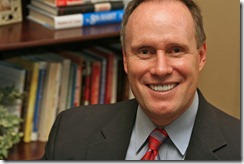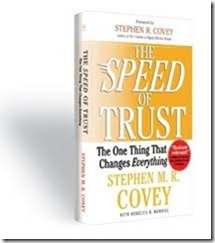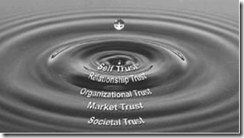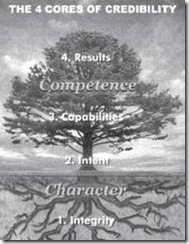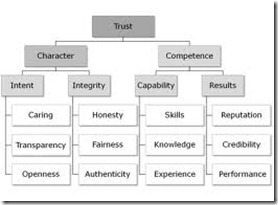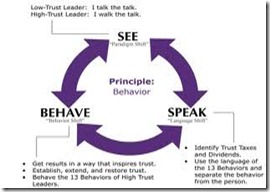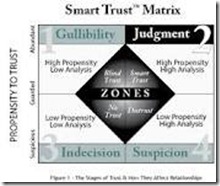 This continues our review of Stephen M. R. Covey’s book The Speed of Trust. Read and apply it.
This continues our review of Stephen M. R. Covey’s book The Speed of Trust. Read and apply it.
Covey describes the 13th behavior, Extend Trust, “While the other behaviors help you become a more trusted person or manager, this behavior will help you become a more trusting leader. Not only does it build trust, it leverages trust. It creates reciprocity; when you trust people, other people tend to trust you in return.” We will also review Covey’s invitation to extend “Smart Trust”.
Behavior 13: Extend Trust
Covey writes “Extend trust—is different in kind from the rest of the behaviors. It’s about shifting from ‘trust’ as a noun to ‘trust’ as a verb. While the other behaviors help you become a more trusted person or manager, this behavior will help you become a more trusting leader.”
- “Extend trust is based on the principles of empowerment, reciprocity, and a fundamental belief that most people are capable of being trusted, want to be trusted and will run with trust when it is extended to them.”
- “The opposite is to withhold trust, which creates an enormous cost everywhere, especially in organizations.”
- “The counterfeit of Extend Trust takes two forms
- “The first is extending ‘false trust.’ It’s giving people the responsibility, but not the authority or resources, to get a task done”
- “The second is extending ‘fake trust’ –acting like you trust someone when you really don’t.”
Smart Trust
Covey warns “Extending trust can bring great dividends. It also creates the possibility of significant risk. So how do you hit the ‘sweet spot’? How do you extend ‘Smart Trust’ in a way that maximizes the dividends and minimizes the risk?”
Study the above graphic:
- “Zone 1 (High Propensity to Trust: Low Analysis) is the ‘Blind Trust’ zone of gullibility”
- “Zone 2 (High Propensity to Trust; High Analysis) is the ‘Smart Trust’ zone of judgment”
- Zone 3 (Low Propensity to Trust; Low analysis) is the ‘No Trust’ zone of indecision”
- Zone 4 (Low Propensity to Trust; High Analysis) is the ‘Distrust’ zone of suspicion”
Friday we discuss Covey’s third wave of trust: Organizational Trust and Alignment

